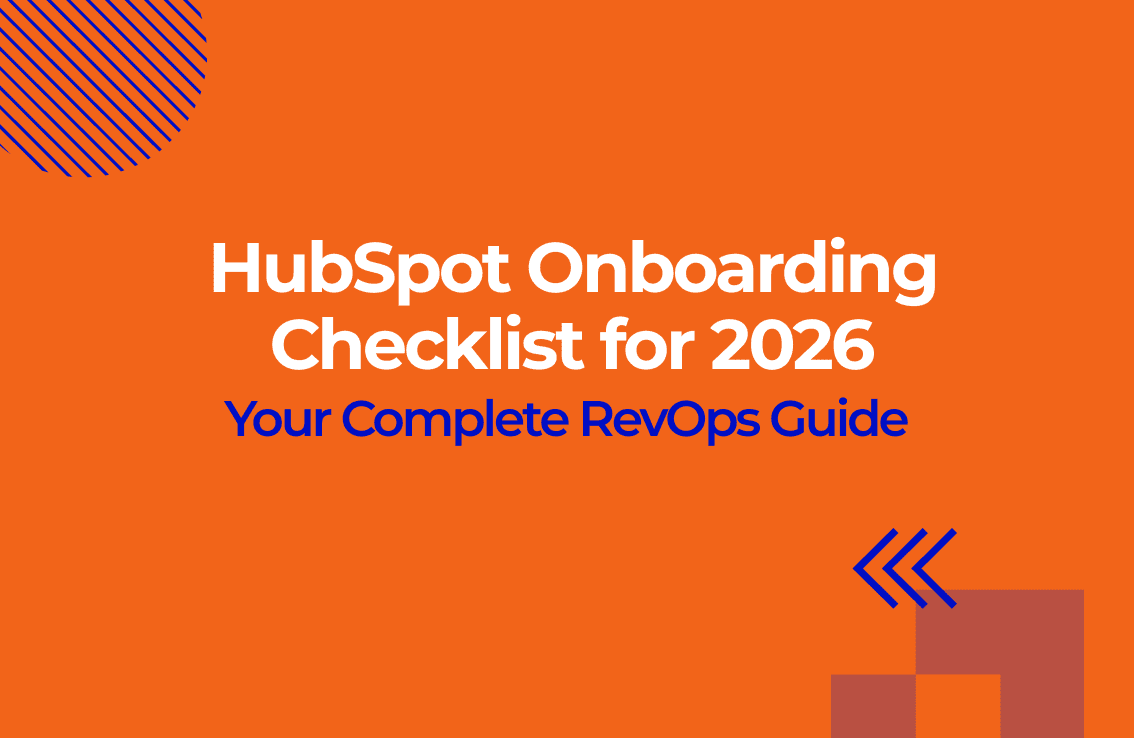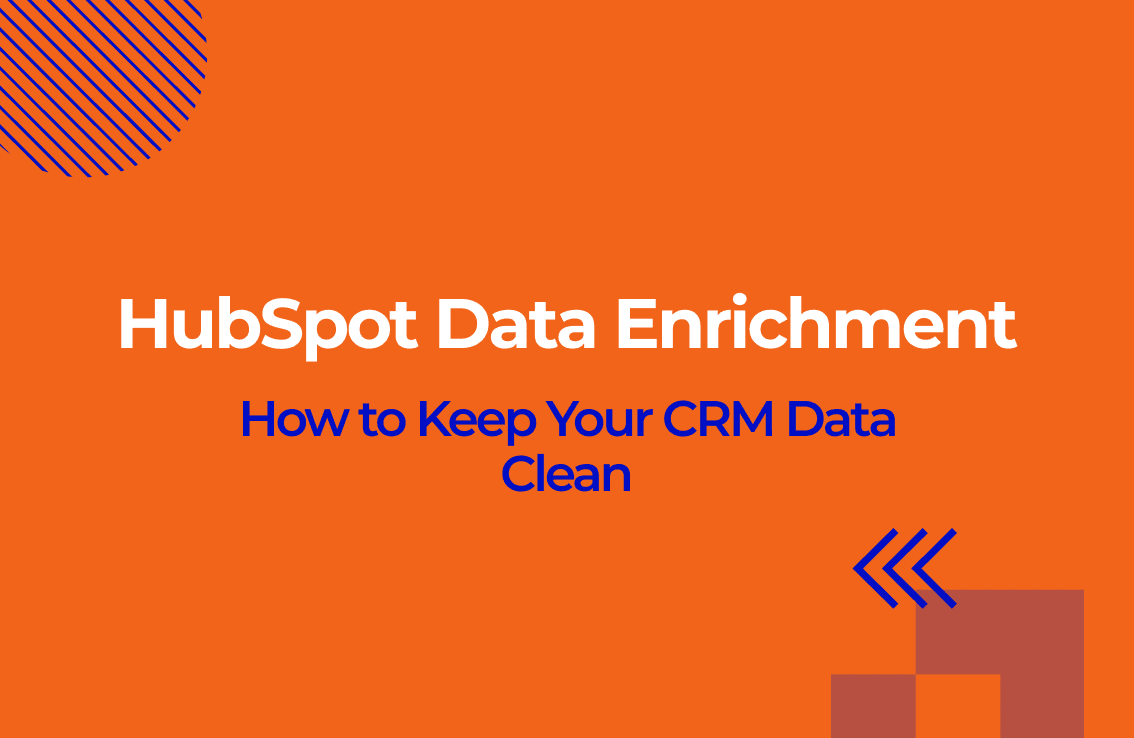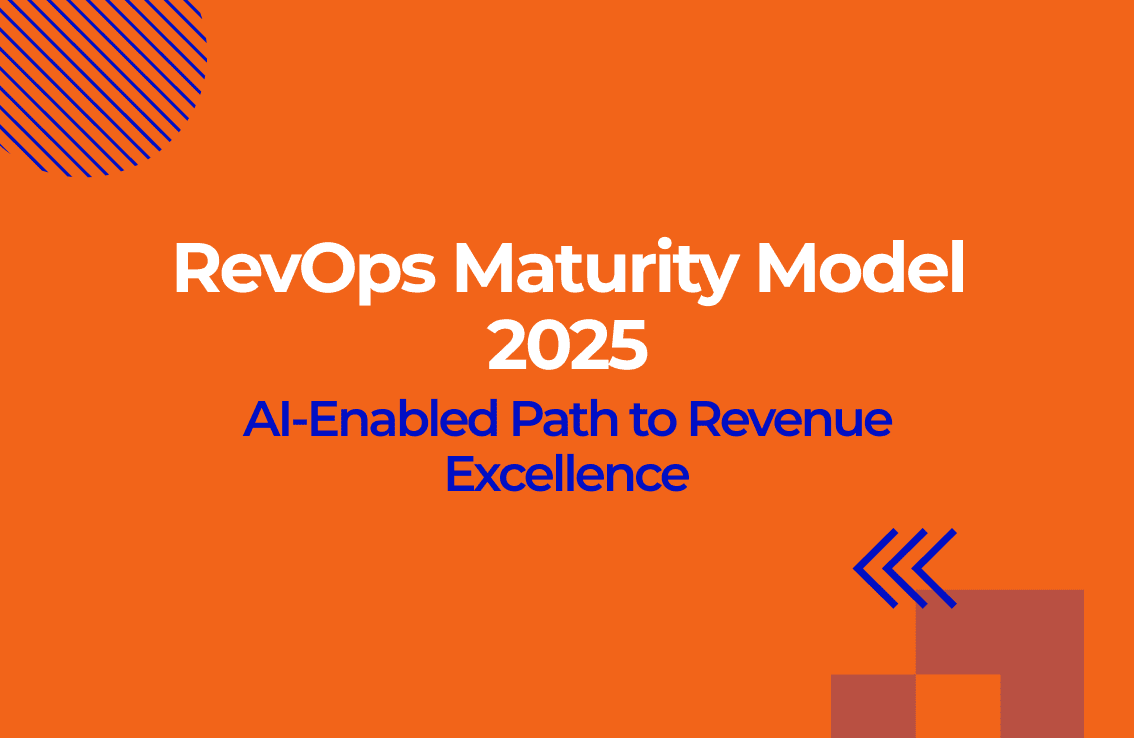What is Revenue Operations: Full Guide
Revenue Operations (RevOps) is a strategic approach that unites marketing operations, sales operations, and customer success operations under one shared framework.
Table of Contents
Introduction
It eliminates the barriers and confusion created when these teams operate separately by integrating their data, processes, and technologies. The chief revenue officer (CRO) plays a crucial role in this integration, connecting various departments to optimize revenue growth.
The main purpose of RevOps is to drive predictable revenue growth and efficiency. It does this by:
-
Aligning Teams: Marketing operations (MOps), sales operations, and customer success operations (CSOps) work together instead of independently, using shared goals and processes.
-
Creating Clear Metrics: All teams track revenue-related metrics instead of isolated targets. This ensures everyone clearly understands how their actions affect revenue.
-
Streamlining Processes: RevOps standardizes how leads flow from marketing to sales and eventually customer success, preventing lost opportunities and improving customer experiences.
-
Using Technology Effectively: RevOps uses an integrated tech stack—such as CRMs, marketing automation, and analytics platforms—to eliminate manual tasks and deliver insights faster.
A key outcome of RevOps is improved customer retention, as coordinated efforts across departments lead to better customer experiences and loyalty.
Companies using RevOps grow faster and operate more profitably. For instance, businesses with strong revenue operations see about 36% more revenue growth and are 28% more profitable (Boston Consulting Group). Additionally, operational costs drop by around 30% when teams are effectively aligned (QuotaPath).
RevOps is often implemented through Go-to-Market Operations (GTM Ops), the daily execution arm that turns overall strategies into practical actions. GTM Ops ensures consistent communication and smooth handoffs between marketing operations, sales operations, and customer success operations.
By bringing these operations together, RevOps creates clarity, saves costs, and ensures teams are collectively driving business success.
Technologies in RevOps (Revenue Operations)
Technologies unify marketing, sales, and customer success under a single revenue framework, with revenue data as a crucial component. Data integration, automation, and real-time analytics turn disjointed processes into one efficient operation.
Short on time? Here’s how technology powers RevOps:
-
Eliminates Data Silos: Platforms like MuleSoft and Zapier create a single source of truth, reducing reporting errors.
-
Automates Routine Tasks: Lead routing, forecasting, and onboarding get streamlined, cutting acquisition costs.
-
Enables Actionable Insights: BI tools (Tableau, Power BI) deliver analytics for faster decisions and up to higher forecast accuracy.
-
Improves Team Collaboration: Shared dashboards remove the need to “swivel chair” between systems, increasing productivity across the revenue cycle.
Key metrics are essential for assessing the effectiveness of RevOps technologies, driving predictable revenue through measurable outcomes.
Core Tools for a RevOps Tech Stack
|
Category |
Role in RevOps |
Examples |
|---|---|---|
|
CRM Systems |
Centralize customer data and manage pipelines |
Salesforce, HubSpot CRM |
|
Marketing Automation |
Automate campaigns and lead nurturing |
Marketo, Pardot, HubSpot Mktg |
|
Analytics & BI |
Provide insights and revenue forecasts |
Tableau, Power BI, Looker |
|
Data Integration |
Connect software to maintain data accuracy |
MuleSoft, Zapier, Segment |
|
AI Enrichment |
Enrich data using AI and real-time data. |
Clay, Persana, Clearbit, Custom API |
RevOps teams often face “tool sprawl” and integration issues. Regular tech audits and user training reduce friction and boost adoption. With the right technology in place, organizations unify workflows, elevate customer experiences, and consistently exceed revenue targets.
How Does RevOps Drive GTM Alignment and Revenue Growth?
RevOps aligns marketing, sales, and customer success operations through a dedicated revenue operations team to create a unified go-to-market approach. It bridges traditional gaps between these teams by providing clear, shared metrics and standardizing key workflows.
How RevOps Creates Alignment:
-
Shared Metrics:RevOps defines clear, unified metrics—like revenue targets, pipeline velocity, and retention rates—that all teams follow (Boston Consulting Group).
-
Standardized Workflows:Teams follow consistent processes for lead scoring, sales handoffs, and customer onboarding, improving lead acceptance and reducing friction.
-
Single Source of Data:All teams share a unified view of customer interactions, reducing errors and enhancing customer experience (McKinsey).
RevOps is essential for driving revenue growth through unified strategies.
Cultural Impact of RevOps:
RevOps fosters a collaborative culture focused on accountability and improvement by:
-
Encouraging cross-team communication and early problem-solving.
-
Building shared accountability for revenue outcomes.
-
Continuously identifying and resolving bottlenecks.
|
Area of Alignment |
Before RevOps |
After RevOps Implementation |
|---|---|---|
|
Goals & Metrics |
Separate departmental targets |
Unified revenue-based metrics (Forrester) |
|
Lead Management |
Poor sales-marketing lead alignment |
Clear shared definitions boost qualified leads. (BCG) |
|
Sales Cycles |
Disjointed sales processes slow down deals |
Sales cycles shortened (QuotaPath) |
|
Decision Making |
Decisions based on incomplete data |
Improved forecasting accuracy (McKinsey) |
RevOps directly impacts revenue by aligning all operations around common goals, unified processes, and shared data—creating predictable growth and improving customer experiences.
What Are the Key Tools in a RevOps Tech Stack?
An effective RevOps tech stack connects marketing, sales, and customer success through essential software. Each tool category simplifies workflows and boosts productivity. Maximizing recurring revenue is essential for business growth and efficiency, as it allows companies to align their teams and streamline processes to improve customer satisfaction and overall operational success.
Mapping RevOps Tech Stack to the Customer Journey
Utilizing the Winning by Design “Bow Tie” model framework enables systematic tool deployment across customer lifecycle phases—from initial awareness acquisition through lifetime value (LTV) maximization.
The technical workflow schema below demonstrates integration architecture for platforms including HubSpot CRM, Apollo, Dock.us, and additional system components, with precise delineation of functionality touchpoints throughout buyer and customer journey phases.
 The key tool categories include:
The key tool categories include:
-
CRM systems
-
Marketing Automation Platforms
-
Analytics and Reporting
-
Data Integration and Management
-
Account-Based Marketing (ABM) Tools
Focusing on revenue streams, the RevOps tech stack aims to identify and optimize new revenue opportunities by aligning sales, marketing, and customer success. This alignment enhances overall business profitability and customer retention by leveraging data analytics and effective management of the customer journey.
CRM Systems
CRM systems manage customer data, interactions, and sales pipelines in one place.
-
Centralize customer records for easy access.
-
Track sales deals and pipeline stages clearly.
-
Align teams by providing a unified customer view.
|
CRM Tools |
Key Benefits |
|---|---|
|
HubSpot CRM |
Easy-to-use interface, robust integrations, unified view of customer interactions |
|
Salesforce |
Powerful enterprise pipeline tracking |
|
Microsoft Dynamics |
Flexible pipeline management, advanced analytics |
Why HubSpot? HubSpot CRM integrates easily with sales and marketing automation tools, streamlining lead management and reducing manual effort.
Marketing Automation Platforms
These platforms automate marketing campaigns and streamline lead nurturing.
-
Automate repetitive marketing tasks.
-
Improve lead qualification through automated scoring.
-
Direct integration with CRM systems.
-
HubSpot Marketing Hub: Seamless CRM integration, intuitive workflow automation, simplified campaign tracking.
-
Marketo: Strong lead nurturing capabilities.
-
Pardot (Salesforce): Advanced lead nurturing for larger enterprises.
Why HubSpot? HubSpot Marketing Hub directly integrates with HubSpot CRM, enabling fully automated, real-time lead management.
Analytics and Reporting
Analytics tools turn data into insights for better decision-making.
-
Provide real-time insights through dashboards.
-
Improve accuracy in revenue forecasting.
-
Aggregate data from multiple departments.
-
Tableau: Advanced data visualization capabilities.
-
Power BI: Real-time business analytics.
-
HubSpot Reporting: Built-in analytics for tracking sales, marketing, and customer success metrics in a unified view.
HubSpot Advantage: HubSpot’s built-in reporting tools reduce complexity, eliminating the need for multiple reporting solutions.
Data Integration and Management
These tools connect different systems to avoid data silos.
-
Automate data transfer between systems.
-
Improve data accuracy across teams.
-
Support unified reporting and analytics.
-
Zapier: Simple, no-code integrations between apps.
-
MuleSoft: Complex enterprise integrations.
-
Segment: Centralized customer data platform.
Why integrate with HubSpot?
HubSpot’s API compatibility simplifies integration, maintaining high data quality and seamless workflows.
Account-Based Marketing (ABM) and Customer Success Tools
ABM tools enable targeted outreach to specific high-value accounts.
-
Identify accounts with high purchase intent.
-
Personalize outreach at scale.
-
Improve sales and marketing alignment around target accounts.
|
ABM Tool |
Primary Use Case |
Key Benefit |
|---|---|---|
|
HubSpot ABM |
Integrated ABM & CRM data |
Unified view of target account activities. |
|
6sense |
AI-driven intent data |
Prioritize accounts by intent signals. |
|
Demandbase |
Account-focused marketing & advertising |
Comprehensive ABM campaigns. |
|
Sales engagement & contact enrichment |
Find and engage high-value leads. |
|
|
Terminus |
Multi-channel ABM campaigns |
Execute coordinated account outreach. |
Why HubSpot ABM? HubSpot’s ABM tool integrates seamlessly with CRM, marketing automation, and sales enablement, simplifying ABM implementation and improving team alignment.
Data Integration and Management Tools
Data integration platforms break down data silos, ensuring unified data management.
-
Connect CRM, marketing automation, and analytics.
-
Automate workflows and improve data accuracy.
-
Create unified data visibility for reporting.
-
Zapier: Simplifies app integration without coding.
-
MuleSoft: Robust integrations for enterprise solutions.
Why connect with HubSpot? Easy-to-use integrations in HubSpot significantly reduce complexity, boosting productivity across teams.
Choosing integrated tools like HubSpot across CRM, marketing automation, analytics, and ABM ensures cohesive RevOps alignment, streamlined workflows, and faster revenue growth.
What Are the Challenges in Implementing RevOps Technology?
Implementing revenue operations as a strategic business function often leads to issues like overlapping tools, integration complexity, and user adoption hurdles. These obstacles typically arise from unclear planning, inadequate tool selection, or resistance to change.
Top RevOps technology implementation challenges include:
-
Tool Sprawl: Caused by decentralized purchasing, resulting in duplicated tools and data confusion.
-
Integration Complexity: Often due to legacy system incompatibilities, causing disconnected data flows.
-
Resistance to Adoption: Triggered by unclear benefits or poor usability, making teams revert to old workflows.
A well-defined revenue operations team structure is crucial in overcoming these implementation challenges, ensuring that roles and responsibilities are clear and aligned with business needs.
|
Challenge |
Common Causes |
Actionable Solutions |
Responsible Role |
|---|---|---|---|
|
Tool Sprawl |
Decentralized tool purchasing; unclear strategy |
Regular audits; consolidate tools into integrated platforms like HubSpot CRM. |
RevOps Leader |
|
Integration Complexity |
Legacy systems; lack of upfront integration planning |
Prioritize native integrations (HubSpot, Zapier); proactively plan data flows. |
RevOps Analyst |
|
Adoption Resistance |
Complexity of new tools; insufficient training |
Choose intuitive platforms; structured user training emphasizing clear benefits. |
Department Leaders (Marketing, Sales, CS) |
Addressing these key challenges early ensures successful RevOps technology adoption, efficient workflows, and sustained team alignment across the revenue cycle.
How Do You Build a Scalable RevOps Tech Stack?
Building a scalable RevOps tech stack requires careful planning and continuous optimization. Sales ops is a crucial component of the RevOps tech stack, and you must align your tools closely with current workflows, integration needs, and future business growth.
Follow these key steps:
-
Audit Current Tools: Review current software, identify overlaps, and define clear requirements.
-
Prioritize Integration: Choose tools with native integrations to simplify data flow and avoid silos. A scalable tech stack helps drive revenue growth by ensuring seamless collaboration among sales, marketing, and customer success teams.
-
Emphasize User Adoption: Select intuitive platforms and provide structured training to increase adoption.
RevOps Tech Stack Implementation Steps:
|
Step |
Key Actions |
Responsible Role |
|---|---|---|
|
Audit & Assess Needs |
Identify redundant tools, clarify team workflows. |
RevOps Analyst |
|
Select Integrated Tools |
Prioritize ease of integration and usability (e.g., HubSpot). |
RevOps Leader |
|
Implement in Phases |
Roll out solutions gradually, focusing first on core platforms. |
Department Leads |
|
Train & Support Users |
Provide targeted training; create clear usage guides. |
Department Heads |
|
Continuous Optimization |
Regularly audit, refine workflows, and adjust based on feedback. |
RevOps Analyst |
Regular auditing and phased implementation ensure your RevOps tech stack remains flexible, integrated, and responsive to evolving business demands.
How to Create a RevOps Implementation Roadmap?
A RevOps implementation roadmap clearly outlines steps, timelines, and responsibilities needed to successfully align marketing, sales, and customer success operations. A clear roadmap helps teams understand responsibilities and ensures effective adoption.
Key steps to build your RevOps roadmap:
-
Assessment: Audit existing technology, define clear business objectives, and identify current gaps.
-
Implementation: Select integrated solutions, establish key workflows, and prioritize user adoption strategies.
-
Optimization: Continuously improve through data monitoring, training, and iterative refinement of processes.
Essential Elements in a Revenue Operations Implementation Roadmap:
|
Roadmap Element |
What's Included |
Owner |
|---|---|---|
|
Objectives & Audit |
Clear goals, tech stack audit, process documentation. |
RevOps Analyst |
|
Tech Selection & Setup |
Choosing and integrating key systems (CRM, automation, analytics). |
RevOps Leader |
|
Training & Adoption |
Structured training, ongoing support, adoption monitoring. |
Department Heads |
|
Continuous Optimization |
Data hygiene audits, feedback loops, iterative improvements. |
RevOps Analyst |
Integrating these clear, practical elements ensures successful RevOps implementation, enhanced team alignment, and predictable revenue outcomes.
This structured roadmap guides your RevOps journey clearly, aligning teams and ensuring technology adoption delivers real business impact.
How Is RevOps a Customizable Framework for Revenue Operations Team Structure?
Revenue operations is not a one-size-fits-all solution. It is a flexible framework that businesses tailor based on industry, size, and growth stage. Companies customize their RevOps approach by adjusting processes, tools, and data models to match unique operational needs, focusing on optimizing the entire customer journey.
Why Is RevOps Customizable?
-
Business Models Differ – B2B SaaS companies focus on long sales cycles and renewals, while e-commerce businesses prioritize transactional efficiency.
-
Growth Stages Affect Priorities – Startups need agility with minimal tools, while enterprises optimize for efficiency at scale.
-
Tech Stacks Vary – Some businesses prefer all-in-one solutions like HubSpot, while others use specialized best-in-class tools.
The sales team plays a crucial role in customizable RevOps frameworks by enhancing deal closure rates through performance metrics and training.
Key Elements That Make RevOps Adaptable
|
RevOps Element |
Customization Options |
Common Use Cases |
|---|---|---|
|
Revenue Strategy |
Demand generation, ABM, inbound/outbound models |
SaaS, Agencies, IT Services |
|
Tech Stack |
Integrated suite vs. best-of-breed tools |
Startups: HubSpot, Enterprises: Salesforce + BI |
|
Processes & Workflows |
Automated vs. manual, flexible handoffs |
High-velocity sales vs. enterprise deals |
|
Data Management |
Centralized CRM, data lakes, real-time syncs |
AI-driven analytics vs. manual forecasting |
|
Team Structure |
Centralized RevOps team vs. distributed across functions |
Startup: 1 RevOps manager, Enterprise: Specialized teams |
How Businesses Customize RevOps for Scalability
-
Assess business model and go-to-market motion.
-
Select tools and integrations that fit company size and goals.
-
Define RevOps priorities based on sales cycles and revenue drivers.
-
Establish scalable processes that adapt as the business grows.
Revenue Operations flexibility makes it a powerful framework, allowing businesses to scale operations efficiently while maintaining alignment across teams.
TL;DR – The Revenue Operations Tech Stack Guide
-
RevOps aligns marketing, sales, and customer success under a single operational framework to streamline workflows, unify data, and drive predictable revenue growth.
-
Key benefits include: increased efficiency, reduced operational costs, and improved customer experience.
-
A scalable RevOps tech stack includes: CRM, marketing automation, analytics, data integration, and AI-powered insights.
-
Building a RevOps roadmap involves: auditing tools, integrating core systems, automating workflows, and driving adoption through structured training.
-
Common challenges include: tool sprawl, integration difficulties, and user resistance—solved through consolidation, governance, and phased rollouts.
-
RevOps is highly customizable—businesses tailor it based on revenue models, tech stacks, and growth priorities.
A well-implemented RevOps strategy enables scalable revenue operations, data-driven decision-making, and seamless GTM alignment.
.png)


